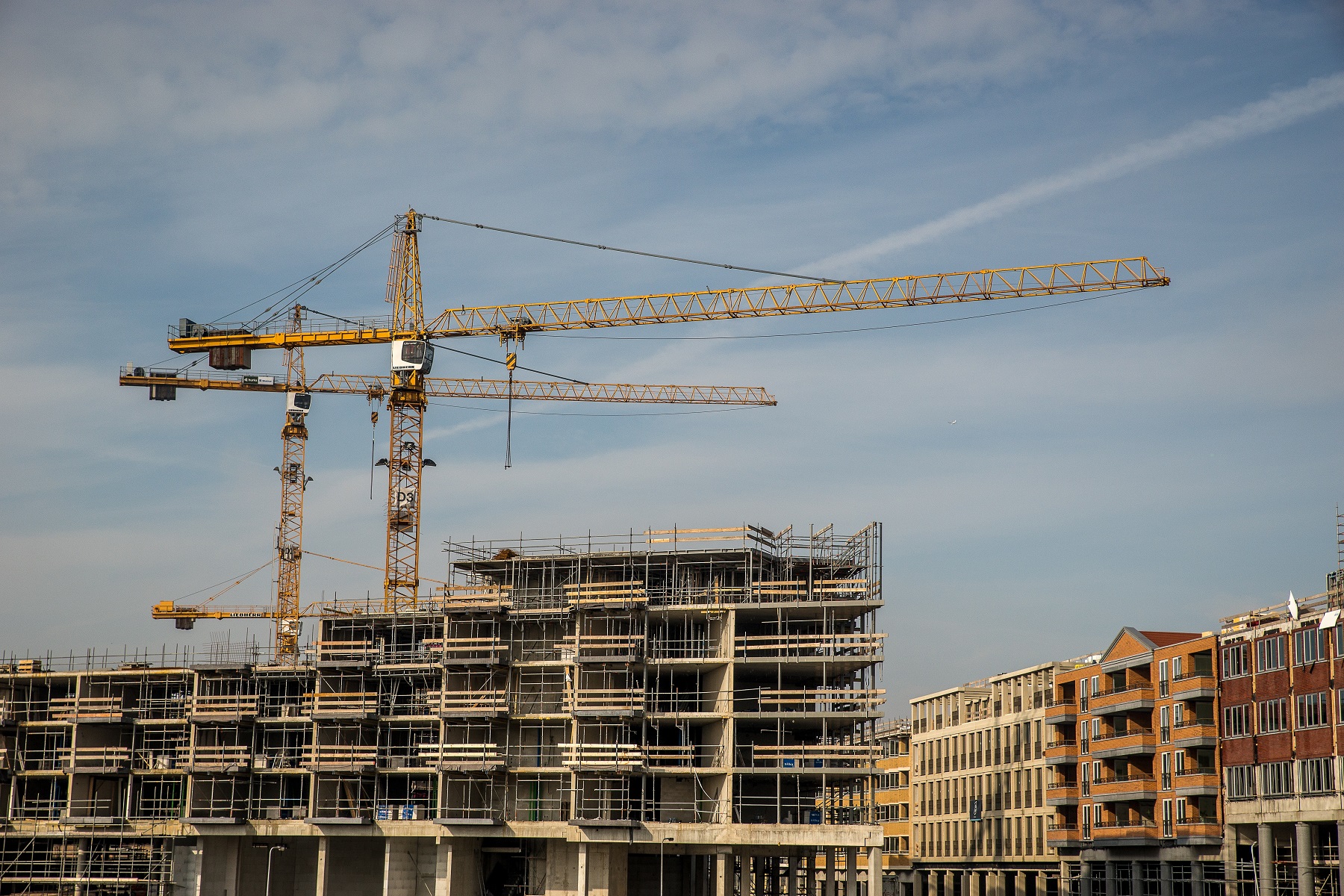 Photo: Vladimir Đorić i Jasmina Radovanović
Photo: Vladimir Đorić i Jasmina RadovanovićWhile we wait for the draft amendments to the Law on Planning and Construction to enter the parliamentary procedure, Vladimir Djorić, partner at Zabriskie Studio, and Jasmina Radovanović, head of the Property and Investments Unit at NALED, comment on the proposed changes.

Photo: Pexels
Our interlocutors agree that the abolition of the fee for the conversion of land use rights into property rights and the provisions that encourage green construction will be the greatest benefits of the amendments to the Law on Planning and Construction if the amendments are adopted in the Assembly, noting that a large number of participants in the public debate prove that this law is extremely important.
.jpg)
Vladimir Djorić, Zabriskie / Photo: Vladimir Miladinović
What are the main positive changes introduced by the amendments to the Law on Planning and Construction?
Vladimir Djorić: Recognizing the terms and principles of green, that is, sustainable construction, goes in step with contemporary trends in construction, and it is great that the state has included them in its agenda. I think that this is just the beginning, and things will move forward in the same direction.
As much as one may think that it is a controversial and unfair decision, the abolition of the conversion fee is still compatible with our reality. If in 20 years the state earned about 30 million euros, according to the state authorities, then this means that the conversion was inapplicable and unsustainable. One should be realistic and honest: no one buys a factory to produce, for example, tractors in the middle of the city, but to invest. It is important to separate the principle of conversion from the question of who is buying and how, and from what kind of planning documents we have. If we are talking about conversion as a legal provision, then it is certainly positive that the state gave up on that point.
Transferring some responsibilities, for example, issuing information, from the state administration to legal entities, is an excellent move. I hope it points to the direction in which further iterations of the law could go. In particular, location information is not an administrative act, and there is no reason for the state administration to be overwhelmed with such tasks, especially since there are already parallel flows and services provided by real estate agencies or architectural firms on the market.
One of the biggest smokescreens in the complex system of urban planning is the unregulated status of individual buildings or ambient units. The draft amendment to the law requires the Institutes for the Protection of Monuments to declare whether protection studies are necessary and, if so, to adopt them within a limited period. At the moment, there is a "schizophrenic" situation in certain parts of Belgrade, for example at Neimar. On the one hand, the plans that allow certain construction are valid, and on the other hand, the "protectionists" who removed the protection measures are allegedly working on new protection measures, and in the meantime we have investors with their own interests and citizens and interested public who would like to prevent the demolition of certain buildings.
The introduction of the term "project manager" as a new subject in the process of designing and building the facility is also positive. For now, there are no defined competencies and responsibilities, but I believe that it will come to that. This is an incentive for the professionalization of services and raising the quality of design and execution.

Jasmina Radovanović, NALED / Photo: NALED
Jasmina Radovanović: The abolition of the conversion fee for businessmen who acquired land through privatization, bankruptcy, or enforcement is the most noticeable change that we welcome. This was one of NALED's priority recommendations, which will unlock new, neglected, and unused attractive locations for construction and development. In the previous two years, we talked a lot about the importance of abolishing the fee because its introduction, after the comprehensive analyses we conducted, turned out to be a legal and political failure. The positive aspects of the conversion fee are comparatively modest in terms of the state's realized income on this basis, while the negative consequences, embodied in lost potential income and the preservation of socialist legal institutes, as well as a number of existing practical problems, are significantly more numerous.
Another innovation that can be observed is the definition and clarification of legal institutes, especially in the area of encouraging green energy, as well as the introduction of special certificates for all buildings to be energy efficient, which was done in order to raise the standard of urban construction in the country in the future. It was also proposed to form new institutions at the level of the whole country: the chief state urban planner, the state commission for plans, and the Agency for Spatial and Urban Planning. In exceptional cases, it is also possible to transfer competences from local self-government units to the state, even outside the institutions, in order to make the process of obtaining permits more efficient; for example, it is possible for notaries public and other registered persons to issue information about the location.
In terms of urban-planning activities, I must certainly mention the extremely important provisions for the introduction of e-Prostor, which indicate that the state has recognized the need to digitize the creation and use of planning documents, which is another initiative that NALED advocates. This would entail a reform of the system of production and distribution of planning documents and other legal regimes governing the use of space, including construction conditions.
The legislation introduced a series of provisions aimed at improving the efficiency of issuing construction permits, such as: the introduction of the institute of "administrative silence"; predicting greater responsibility of authorized persons in the procedures for issuing acts for construction, if the acts are not issued within the legal deadlines; extending responsibility to the plot owner in addition to contractors and investors; the introduction of greater competences of urban inspectors and shorter deadlines for decision-making by authorities on objections to location conditions; making it impossible to dispute the location conditions after the construction permit issued according to those location conditions has become legally binding; conditioning public authority holders who submit their conditions during the preparation of the planning document that they cannot change them later during the adoption of the planning document, etc. This is also correlated with the activities of NALED, which, at the beginning of each year, monitors and publishes statistics on the efficiency of issuing building permits.
How realistic is it for green provisions to take root in practice, especially in housing?
Vladimir Djorić: The measures may be modest and will not produce effects in housing construction, but it is still important to move in that direction. They should be greeted. I think that as things continue to develop, urban-economic mechanisms will emerge that will encourage investors to move in the direction of certification.
Jasmina Radovanović: According to experience, much will depend on the measures and resources for information, education, and training of officials and the private sector. NALED has extensive experience with earlier amendments to the Law on Planning and Construction, which introduced electronic construction permits, and the Law regulating the registration procedure in the cadastre. At that time, we had massive training programs for civil servants and competent authorities, as well as a special contact center for citizens. The promotional campaign, in which we included a large number of local governments, was extremely dynamic. Also, the coordination of several different ministries is necessary for the reform to take root in practice.
Were the construction industry representatives agile enough during the public discussion?
Vladimir Djorić: According to the number of people present at the public discussion and presentation at the Serbian Chamber of Commerce, where there were more than 200 interested parties, they were. However, listening to the speakers, I would say that some other interested groups were much more active in the discussion than the construction profession, namely, investors, designers, and contractors. I am not familiar with the number of objections received, but my subjective impresion is that some personnel decisions within the administrations were a much more important topic for the construction profession than the actual changes to the law. Perhaps this is because the previous model of the law was not so bad. The greater challenge was the application of the law, interpretations, and compliance with the provisions, which largely depend on who and how the law is applied.
Jasmina Radovanović: It is commendable that there was a public debate, sometimes even heated. This shows how important this law is and how many different areas it regulates, which significantly affect citizens and the economy. NALED received many comments from members, including construction companies, but it is interesting that they did not advertise publicly, which may indicate that they agree with the announced changes.
We made a lot of proposals for improving the draft law, and we have assurances from the Ministry that a large part of our proposals have been accepted. It remains to be seen which text will enter the Assembly. In the past, modifications made in Parliament resulted in considerable changes to some decisions. Nothing is final until the President of the Republic signs the decree on the promulgation of the law.
MEASURES AGAINST ILLEGAL CONSTRUCTION
"It is commendable that there are provisions to prevent illegal construction, so the obligation is introduced for local self-governments to adopt planning documents within three years that will cover at least 70% of the construction area of the local self-government. The term brownfield location is introduced, which represents facilities and contents that have not been used for a long period of time and have the potential for urban renewal, which local governments should list in order to plan their renewal. The old planning documents adopted before 1993 would cease to be valid within two years from the adoption of these changes, with the obligation of the authorities to adopt new ones", says Jasmina Radovanović.
COUNTERS AND DIGITALIZATION
The adjustments in one area put the focus back to the counters, as Vladimir Djorić already noted. "It sounds paradoxical, but it won't waste time. Moreover, obtaining conditions, for example, from EPS or JP Srbijagas, outside of the unified procedure, before submitting the request for location conditions, is something that will speed up the procedures. It is, of course, absurd that this, in a way, gives up on the digitization of state administration. It is obvious that some systems are so big and slow that they behave like a state within a state. It would be great if the issue of their agility was solved digitally instead of counters as an alternative," says Djorić.
By: Andrijana Cvetićanin